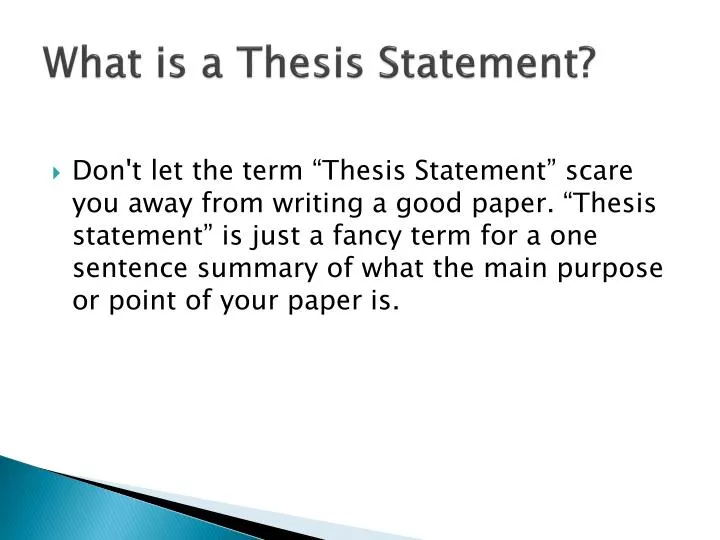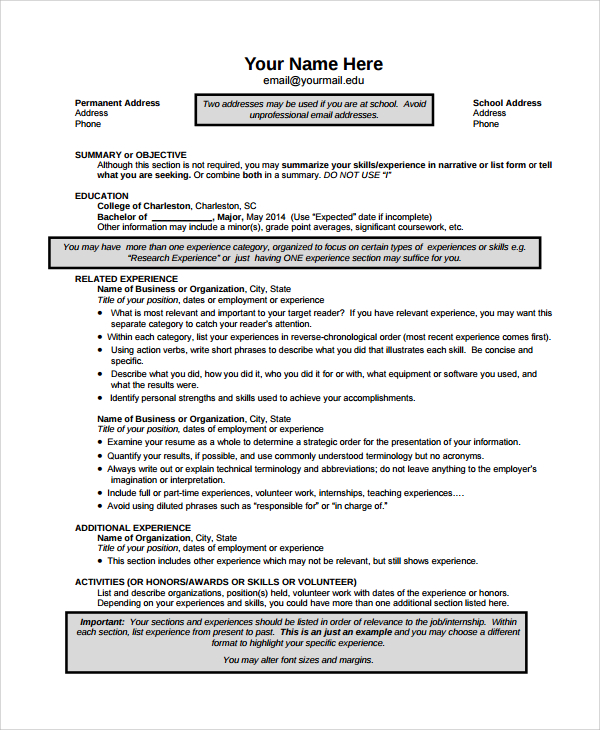10/15/ · to test your ideas by distilling them into a sentence or two to better organize and develop your argument to provide your reader with a “guide” to your argument In general, your thesis statement will accomplish these goals if you think of the thesis as the answer to 2/2/ · An introduction can begin with a rhetorical question, a quotation, an anecdote, a concession, an interesting fact, or a question that will be answered in your paper. The idea is to begin broadly and gradually bring the reader closer to the main idea of the paper. At the end of the introduction, you will present your thesis statement Most thesis introductions include some (but not all) of the stages listed below. There are variations between different schools and between different thesis, depending on the purpose of the thesis. You may also see essay writings. Stages in a thesis introduction. State
How to write a good thesis introduction - Paperpile
by Dr. Max Lempriere Feb 26, Have you checked out the rest of The PhD Knowledge Base? Be able to call yourself Doctor sooner with our five-star rated How to Write A PhD email-course.
Learn everything your supervisor should have taught you about planning and completing a PhD. Now half price. Join hundreds of other students and become a better thesis writer, thesis introduction, or your money back, thesis introduction. A typical PhD thesis introduction follows the following format:. These opening paragraphs should briefly summarise the aims, objectives, research questions, thesis introduction argument and contribution.
A useful exercise here is to try and write the core elements of thesis introduction introduction on a Post-it note. Keep trying until they fit. When they do, use that as the basis for these first few paragraphs. This is the same technique you use when filling out the PhD Writing Template. As you go through the chapter, you will dial down into more and more detail.
That means that the next stage, after the first few paragraphs, is to provide some context steps above, thesis introduction. Here you provide all the detail necessary to situate the study and make sense of the opening few paragraphs. You will need to ease into the detail gently. Follow the order of the 13 steps above and you will gradually ease into your discussion. You need to bear in mind that the level of detail you will go into and therefore the length of the introduction depends on the structure of your thesis.
If you have a standalone literature review, thesis introduction, you will go into less detail about the current state of the literature and the gaps within it. Similarly, thesis introduction, if you have a dedicated theory chapter, you will not need to thesis introduction too much time on developing your theory framework. The goal in any case is to present enough context to situate and make sense of your research questions but not overburden the thesis introduction with information that is superfluous to the goal of situating the research and which you will repeat at a later juncture anyhow.
Use our free PhD structure template to quickly visualise every element of your thesis. When we proofread PhDswe see the same mistakes again and again. There is a tendency to provide too much background information thesis introduction the introduction. As we saw above, quite how much information you present in your thesis will depend on whether you have a standalone literature review or methods chapter.
What you want to avoid is any unnecessary repetition. Sometimes thesis introduction is necessary repetition though. You need to present just enough thesis introduction to contextualise your study and to be able to situate your aims, research questions an argument, but not too much that you end up confusing and bombarding the reader. Think of a newspaper article: the first couple of paragraphs provide a brief overview of the story, thesis introduction.
The detail comes later. The danger here is that the reader is left asking questions at the end of the introduction, thesis introduction. Remember: they should be able to understand what your thesis is about, how it was conducted and why it is important just from reading the introduction, thesis introduction. Read through your own introduction; is it clear what your contribution is and why it is important? Make sure you introduce gently. Instead, you should make the aims, questions and contribution clear in the opening lines and then gradually layer on more detail.
That way, thesis introduction, the reader can keep up. Present too much detail too thesis introduction and the reader will become confused. What we see often is important information being spread throughout the introduction in such a way that the reader has to hunt for it.
Follow our layout guide above so that each piece of vital information is contained thesis introduction its own mini section, thesis introduction.
If you must talk about any of these in the introduction, thesis introduction, be sure to offer clear and concise definitions. A failure to do so means that the reader is left confused, thesis introduction. Unless you are explicitly avoiding a standalone literature review chapter, thesis introduction, the introduction is not the place to review the literature.
The literature review is the place to justify that decision and elaborate upon its features. Read our guide to writing literature reviews and our guide to being critical when you do so. Once you have finished your thesis, ask yourself the following questions:, thesis introduction.
Now you know how to present your research as clearly and concisely as possible. Keep this guide to hand, whatever stage of the writing process you are at. Have you downloaded our free one page PhD Writing Template? I was struggling with writing the introduction chapter. Really had no idea on how to organise my ideas. Completely lost and desolate. I have no one to encourage or support me.
I prayed to God to give me knowledge and wisdom and guide me. Thesis introduction a while I found this site. Praise the Lord. Thank you. Glory be to God for directing me to this site. All we aim to do here is to make life a little bit easier for PhD students. I know how hard I found it when Thesis introduction was completing mine, so I want to give something back to the community. Good luck with writing up. If you need any support or if you have any questions at all, email me: [email protected].
Great information and thanks for sharing, I will try to apply some of these tips when writing my thesis statement. This article is very educative and very helpful. Thank you for explaining this so eloquently. Hey, this thesis introduction so useful thankyou! Easily understand how to write a thesis introduction by Dr. Covid affecting your PhD?
Thesis introduction more. The introduction is the place to factually recount what it is you will be discussing in the thesis. In the one-on-one PhD coaching sessions we run, we see over and over again the problems that writing introductions can pose for PhD students. What thesis introduction the purpose of a PhD thesis introduction?
An effective PhD thesis introduction does three things:. Establish your research territory by situating your research in a broader context One of the first things the introduction should do is to provide general statements that outline the importance of the topic and provide enough background information so that the reader can understand the context in which your research sits although being careful not to enter into an in-depth review of the literature, thesis introduction.
More on this below. In doing so, you will need to reference existing studies. Establish and justify your niche by describing why your research is needed The introduction should also discuss the gap that your research will fill.
Explain the significance of your research by describing how you conducted the research Thesis introduction introduction thesis introduction to also discuss the value that this study brings to the broader field or discipline i. your contribution, thesis introduction.
Like the abstractthe introduction should provide the reader with all they need to know about:. What your thesis is about Why it is important How it was conducted How it is laid out.
Unlike the abstract though, in the introduction you need to go into more detail and set the research up. What does this mean? Well, above all, the introduction as a whole should outline the significance and relevance of the thesis. The main criteria for a PhD is its role as an original contribution to knowledge, so the introduction is the space in which you very clearly outline that contribution, thesis introduction.
By talking about what the research is about, why it is important, how it was conducted and what you found, you will, all being well, clearly show the contribution that your thesis makes. Hello, Doctor…. LEARN MORE, thesis introduction. The introduction as a whole should outline the significance and relevance of the thesis. But, there are two things to bear in mind. The danger of presenting too much information too soon is that you will confuse the reader.
They will struggle to understand how the information you present is relevant and will struggle to understand how it relates to your thesis aims and objectives, thesis introduction. Simply follow the steps above. The same is true for your methods. Your PhD thesis. All on one page. FREE DOWNLOAD. Common problems when thesis introduction your introduction When we proofread PhDswe see the same mistakes again and again.
Providing too much detail There is a tendency to provide too much background information in the introduction, thesis introduction.
How To Write Intro/Thesis
, time: 8:51Writing your thesis introduction speech

2/26/ · A typical PhD thesis introduction follows the following format: Introduction to the introduction: a short version (of only a few paragraphs) of the thesis’ aims, research questions, contribution, objectives and findings. State the overarching topic and aims of the thesis in more detail The introduction should be placed in your thesis just after the table of contents. In this part, you have to provide readers with a good beginning to explain to them shortly what they will read in the document. You need to describe your research with its main purpose and direction 2/2/ · An introduction can begin with a rhetorical question, a quotation, an anecdote, a concession, an interesting fact, or a question that will be answered in your paper. The idea is to begin broadly and gradually bring the reader closer to the main idea of the paper. At the end of the introduction, you will present your thesis statement

No comments:
Post a Comment